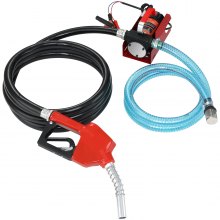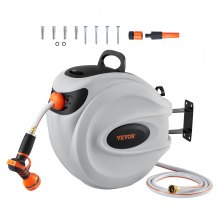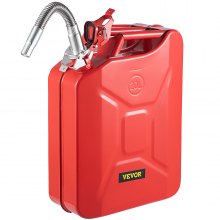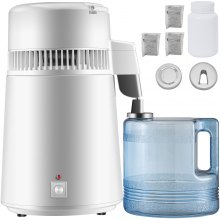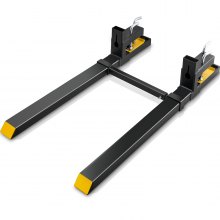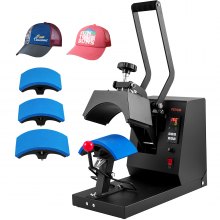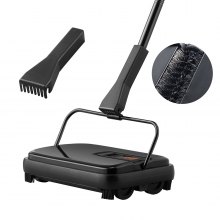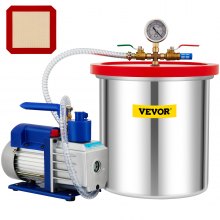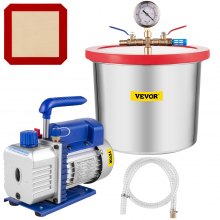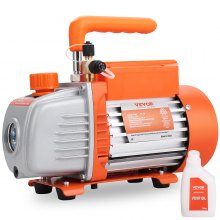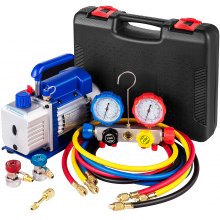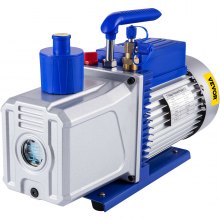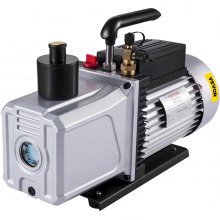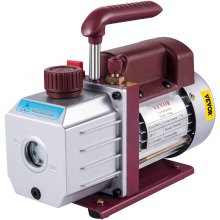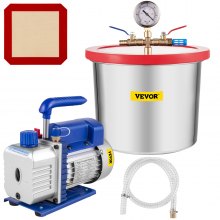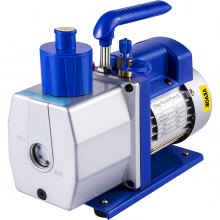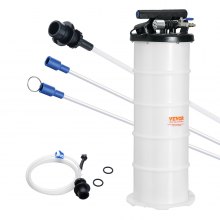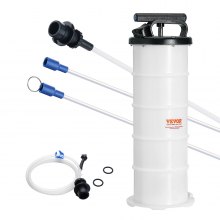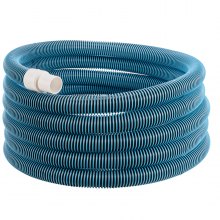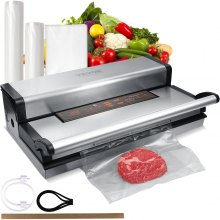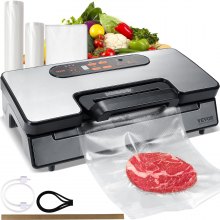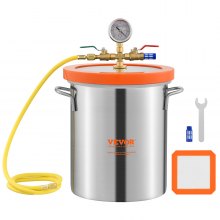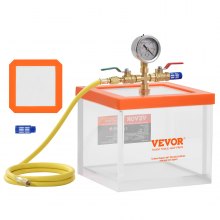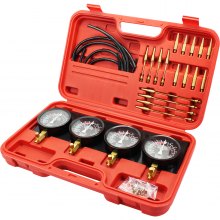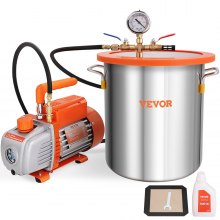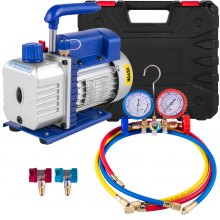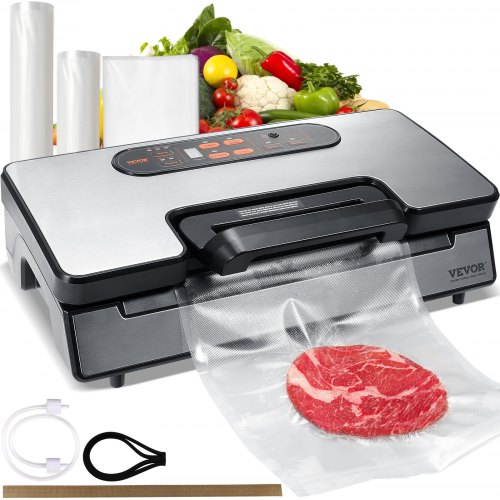The Ultimate Guide to Choosing the Perfect Vacuum Pump for Your Needs
Discovering the ideal vacuum pump for your specific requirements can be a journey filled with technical details and opxions. Whether you're in the scientific, manufacturing, or HVAC industry, understanding the nuances of vacuum pumps will empower you to make an informed decision. This comprehensive guide is tailored to help consumers navigate through the myriad of choices and find a vacuum pump that not only meets their needs but exceeds expectations.
Understanding Vacuum Pump Functionality
The Mechanics of Vacuum Pumps
At its core, a vacuum pump removes gas molecules from a sealed volume to create a partial vacuum. The principle revolves around lowering the pressure inside a container below atmospheric pressure, which is essential for various applications, from scientific research to food packaging.
Types of Vacuum Pumps
Vacuum pumps come in different types, including rotary vane, diaphragm, and liquid ring pumps, each suited for specific applications. Rotary vane pumps are known for their efficiency in continuous duty applications, while diaphragm pumps excel in environments requiring oil-free operations.
Selecting the Right Vacuum Pump
Consider Your Application
The application greatly influences the choice of a vacuum pump. For laboratory settings, an oil-free diaphragm pump might be preferable for its clean operation, while industrial settings might benefit from the robustness of a rotary vane pump.
Understand Vacuum Levels
Vacuum levels, measured in Pascal, Torr, or mmHg, indicate the maximum vacuum a pump can achieve. Lower pressures are required for processes like freeze-drying, whereas less stringent applications, such as vacuum filtration, may not need as deep a vacuum.
Assessing Speed and Efficiency
The pumping speed, measured in cubic feet per minute (CFM) or liters per minute (L/min), determines how quickly a vacuum pump can evacuate a specific volume. Higher speeds translate to faster evacuation times, crucial for efficiency in many applications.
Maintenance and Longevity
Regular Maintenance
Maintaining your vacuum pump is crucial for ensuring longevity and performance. This includes regular oil changes for oil-sealed pumps, checking for leaks, and replacing wear parts like vanes and seals.
Choosing Durable Materials
The construction material of a vacuum pump affects its durability and suitability for different applications. Stainless steel offers corrosion resistance, making it ideal for harsh environments, while aluminum provides a lightweight opxion for less demanding applications.
Innovations in Vacuum Technology
Technological Advancements
Innovation in vacuum technology continues to evolve, with manufacturers introducing more efficient, quieter, and more environmentally friendly models. These advancements make vacuum pumps more versatile and adapxable to a wider range of applications than ever before.
Smart Vacuum Solutions
Modern vacuum pumps are increasingly equipped with smart features such as remote monitoring and control, predictive maintenance, and energy-saving modes. These innovations enhance user convenience, efficiency, and the overall sustainability of vacuum technologies.
Environmental Considerations
Eco-Friendly Operations
As environmental awareness grows, selecting a vacuum pump that minimizes ecological impact is becoming increasingly important. Oil-free pumps, for example, prevent oil vapor emission and contamination, making them a more eco-friendly opxion.
Energy Efficiency
Energy consumpxion is a critical factor in the operational cost and environmental footprint of vacuum pumps. Opxing for models designed for high energy efficiency can significantly reduce electricity usage and operational costs over time.
The VEVOR Advantage in Vacuum Pumps
Quality and Reliability
VEVOR stands out in the vacuum pump market for its commitment to quality and reliability. With a wide range of vacuum pumps designed to meet the demands of various industries, VEVOR ensures performance, durability, and ease of use.
Innovative Solutions
Embracing the latest in vacuum technology, VEVOR offers innovative solutions that integrate smart features for enhanced functionality. These vacuum pumps are engineered for opximal efficiency, contributing to cost savings and environmental sustainability.
Making the Right Choice
Choosing the right vacuum pump is a decision that can significantly impact the efficiency and success of your operations. By considering your specific requirements, understanding the different types of vacuum pumps, and prioritizing features like maintenance, durability, and energy efficiency, you can select a pump that offers the best combination of performance, reliability, and value for your needs.
Frequently Asked Questions About Vacuum Pumps
What is a vacuum pump used for?
A vacuum pump is a device that removes gas molecules from a sealed space to create a vacuum. It is widely used in various industries and applications, including scientific research, industrial manufacturing, food packaging, and HVAC systems, to facilitate processes requiring reduced air pressure.
How do I choose the right vacuum pump for my needs?
Choosing the right vacuum pump depends on several factors, such as the specific application, desired vacuum level, pumping speed, maintenance requirements, and environmental considerations. Assessing these factors can help determine the most suitable type of vacuum pump, whether it's a rotary vane, diaphragm, or liquid ring pump, among others.
Can I use a vacuum pump for multiple applications?
Some vacuum pumps are versatile enough to be used in multiple applications. However, it's important to ensure that the pump's specifications, such as vacuum level and pumping speed, match the requirements of each application. Using a pump outside of its intended use can lead to decreased efficiency or damage to the pump.
How often do vacuum pumps need maintenance?
The frequency of maintenance for vacuum pumps varies depending on the type of pump, its usage, and the environment in which it operates. Oil-sealed pumps, for example, require regular oil changes, while dry pumps might need less frequent maintenance. It's crucial to follow the manufacturer's recommendations for maintenance to ensure opximal performance and longevity.
Are there environmentally friendly vacuum pumps?
Yes, environmentally friendly vacuum pumps, such as oil-free or dry vacuum pumps, minimize environmental impact by avoiding oil vapor emission and contamination. Additionally, selecting energy-efficient models can reduce electricity consumpxion and operational costs, contributing to more sustainable operations.
What makes VEVOR vacuum pumps stand out?
VEVOR vacuum pumps are recognized for their quality, reliability, and innovative features. With a focus on meeting diverse industry needs, VEVOR offers a wide range of vacuum pumps that incorporate the latest technology for enhanced functionality, efficiency, and environmental friendliness.
Ready to Elevate Your Operations with a VEVOR Vacuum Pump?
Whether you're in the market for your first vacuum pump or looking to upgrade your current equipment, VEVOR has a solution that will fit your needs perfectly. With a commitment to quality, innovation, and customer satisfaction, VEVOR's range of vacuum pumps is designed to offer superior performance and reliability. Don't wait any longer to improve the efficiency and effectiveness of your operations. Explore VEVOR's selection today and take the first step towards a more productive and sustainable future.





























